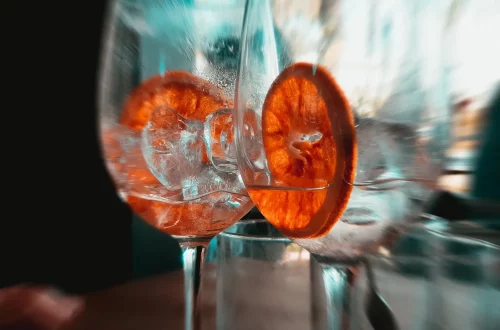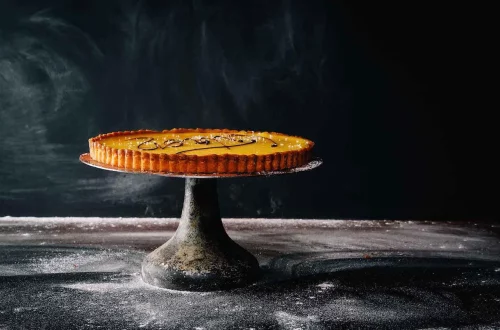
Exploring the Art of Shibari Harness: Techniques and Inspiration
Shibari, the Japanese art of rope bondage, transcends mere restraint, evolving into a profound form of expression and connection. With its roots deeply embedded in centuries-old traditions, Shibari not only emphasizes the beauty of the human form but also fosters trust and intimacy between partners. This intricate practice blends aesthetic appeal with emotional depth, allowing practitioners to explore their creativity while enhancing their relationships.
At its core, Shibari is about communication—between the person tying and the one being tied. It encourages a dialogue of consent, boundaries, and desires, creating an environment where both participants can feel safe and free. The visual impact of Shibari harnesses is mesmerizing, often resembling intricate works of art that adorn the body. This artistic expression can evoke a range of emotions, from serenity to exhilaration, depending on the dynamics at play.
As more individuals discover the multifaceted nature of Shibari, its popularity continues to rise. Whether one is drawn to its aesthetic qualities, the thrill of bondage, or the deepening of interpersonal bonds, Shibari offers something for everyone. This article delves into various aspects of Shibari harness techniques and the inspiration that drives this captivating art form.
Understanding the Basics of Shibari
Before diving into more complex techniques and designs, it’s essential to understand the foundational elements of Shibari. At its essence, Shibari is not just about tying knots; it is about the connection and communication established through the rope. The materials used, the types of knots, and the styles of tying all contribute to the overall experience.
The most commonly used rope in Shibari is jute, known for its strength and texture. Natural fibers like jute provide a tactile experience that synthetic ropes may lack, enhancing both the aesthetic and sensory aspects of the practice. Additionally, the thickness of the rope can influence the sensation experienced by the person being tied. A thicker rope may create a more substantial presence, while a thinner rope can feel lighter and more delicate.
When beginning to explore Shibari, it’s crucial to prioritize safety. Understanding the anatomy of the body is essential to avoid nerve damage or circulation issues. Practitioners should be familiar with the major pressure points and areas to avoid, such as around the neck and joints. Consent and communication should always be at the forefront; discussing limits and safe words before engaging in any bondage practice is vital for ensuring a safe and enjoyable experience.
The art of Shibari also emphasizes the importance of aesthetics. The visual beauty of the knots and the way they contour the body can transform a simple tie into a stunning piece of art. This artistic element is what often draws people to the practice, allowing them to express their creativity in a unique and intimate way.
In summary, understanding the basics of Shibari lays the groundwork for more advanced techniques. It establishes a safety-first approach while highlighting the interplay of art, communication, and connection that defines this captivating practice.
Popular Shibari Techniques and Patterns
Once the fundamentals are grasped, practitioners can explore a variety of Shibari techniques and patterns. Each technique has its own unique characteristics and can be adapted to fit the preferences and comfort levels of those involved.
One of the most iconic patterns in Shibari is the chest harness, often referred to as the “Takate Kote.” This design wraps around the torso and secures the arms, creating a striking visual that emphasizes the body’s natural curves. The Takate Kote is versatile, suitable for both aesthetic purposes and functional restraint. It can be adjusted to fit different body types while ensuring the safety and comfort of the individual being tied.
Another popular technique is the “Shibari Suspend,” where the tied individual is lifted off the ground. This requires an advanced understanding of both the ropes and the dynamics of weight distribution. Suspension can create a breathtaking visual impact, but it also demands a higher level of trust and communication between partners. Safety measures, such as using additional support and ensuring proper body alignment, are crucial when attempting suspension techniques.
The “Hishi” or diamond pattern is another visually striking design often used in Shibari. This pattern creates a series of interconnected diamonds across the body, offering both aesthetic appeal and effective restraint. The Hishi pattern can be applied to various parts of the body, allowing for customization based on individual preferences.
While these techniques are popular, it’s essential to remember that Shibari is a personal journey. Each practitioner may develop their own style and preferences, experimenting with different knots, patterns, and methods to create a unique experience. This exploration of creativity is part of what makes Shibari so engaging and fulfilling.
In conclusion, the world of Shibari is rich with techniques and patterns that cater to a wide range of interests. The beauty of this practice lies in its adaptability and the personal touch each practitioner brings to their art, whether it’s for aesthetic pleasure, connection, or exploration.
Inspiration Behind Shibari Art
The inspiration for Shibari often comes from various sources, including history, culture, and personal experiences. Understanding these influences can deepen one’s appreciation for the art form and enhance the practice itself.
Historically, Shibari was used in Japan for practical purposes, such as restraining prisoners. However, over time, this functional practice evolved into a form of art that emphasizes beauty, intimacy, and trust. The transition from utility to artistry highlights the transformative power of Shibari, as it allows individuals to explore their desires and connect with one another in profound ways.
Artists and photographers have played a significant role in popularizing Shibari as an art form. Many contemporary artists incorporate Shibari into their work, showcasing the intricate designs and the emotional connections formed through the practice. These visual representations serve as powerful reminders of the beauty and complexity inherent in Shibari, inspiring both practitioners and audiences alike.
Personal experiences also serve as a driving force for many who engage in Shibari. For some, it may be a way to confront and explore vulnerability, while for others, it can be a journey of self-discovery and empowerment. The emotional depth of Shibari often encourages individuals to reflect on their relationships, desires, and boundaries, fostering personal growth and connection.
Inspiration can also be drawn from nature and other art forms. The fluidity of water, the intricacy of patterns found in nature, and the elegance of dance can all influence Shibari techniques and designs. This cross-pollination of ideas enriches the practice, enabling individuals to express their creativity in new and exciting ways.
Ultimately, the inspiration behind Shibari is as diverse as the individuals who practice it. By exploring the historical, cultural, and personal dimensions of this art form, practitioners can cultivate a deeper understanding and appreciation for the beauty and complexity of Shibari.
Building Connection Through Shibari
At its heart, Shibari is about connection—between partners, between the rope and the body, and within oneself. This art form has the unique ability to deepen relationships and foster trust, making it a powerful tool for intimacy.
The process of engaging in Shibari requires an open and honest dialogue between partners. Consent and communication are paramount, allowing both individuals to express their desires, limits, and fears. This foundation of trust creates a safe space for exploration, enabling partners to connect on a deeper emotional level.
Moreover, the physical act of tying and being tied can evoke a range of sensations, from vulnerability to exhilaration. These feelings can strengthen the bond between partners, as they navigate the complexities of surrendering control and embracing trust. The act of tying can be seen as a form of care and affection, where one partner takes the time to create a beautiful and safe experience for the other.
Shibari can also serve as a form of mindfulness, drawing attention to the present moment. The focus required to tie intricate knots and patterns encourages practitioners to immerse themselves fully in the experience, fostering a sense of intimacy and connection. This mindfulness can extend beyond the practice itself, enhancing overall relationship dynamics and communication.
For many, Shibari becomes a shared journey of exploration and discovery. As partners experiment with different techniques and styles, they uncover new aspects of themselves and each other. This ongoing exploration can lead to a deeper understanding of desires and boundaries, ultimately enriching the relationship.
In conclusion, Shibari is more than just an art form; it is a powerful means of building connection and intimacy. Through trust, communication, and shared exploration, practitioners can cultivate relationships that are both profound and fulfilling.
In summary, the art of Shibari harness offers a unique blend of aesthetics, connection, and personal exploration. By understanding the basics, experimenting with various techniques, and drawing inspiration from various sources, practitioners can create beautiful, meaningful experiences that enhance their relationships and foster a deeper understanding of themselves and their partners.
*Disclaimer: This article is for informational purposes only and does not constitute medical advice. Always consult a healthcare professional for any health-related concerns.*




